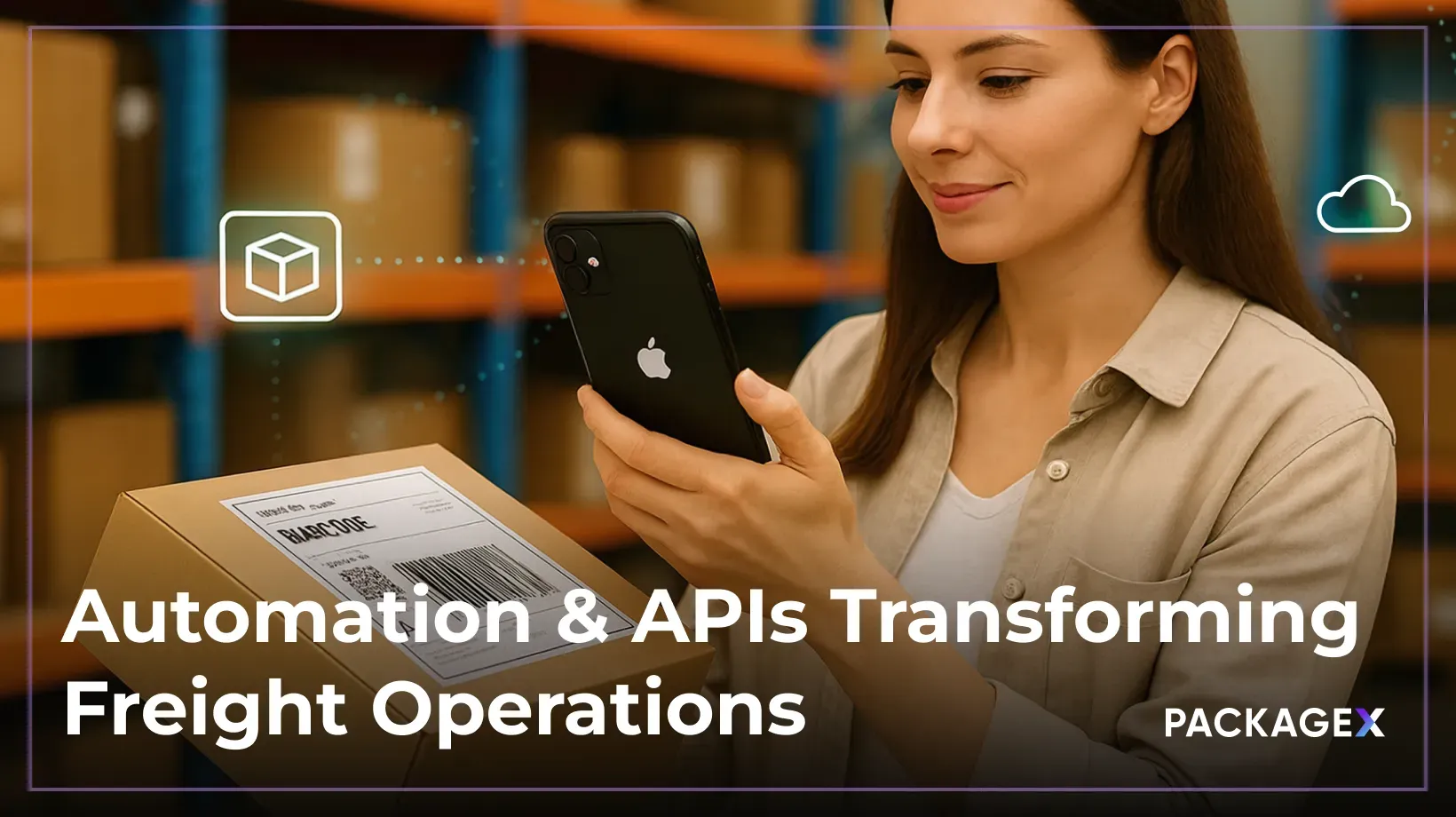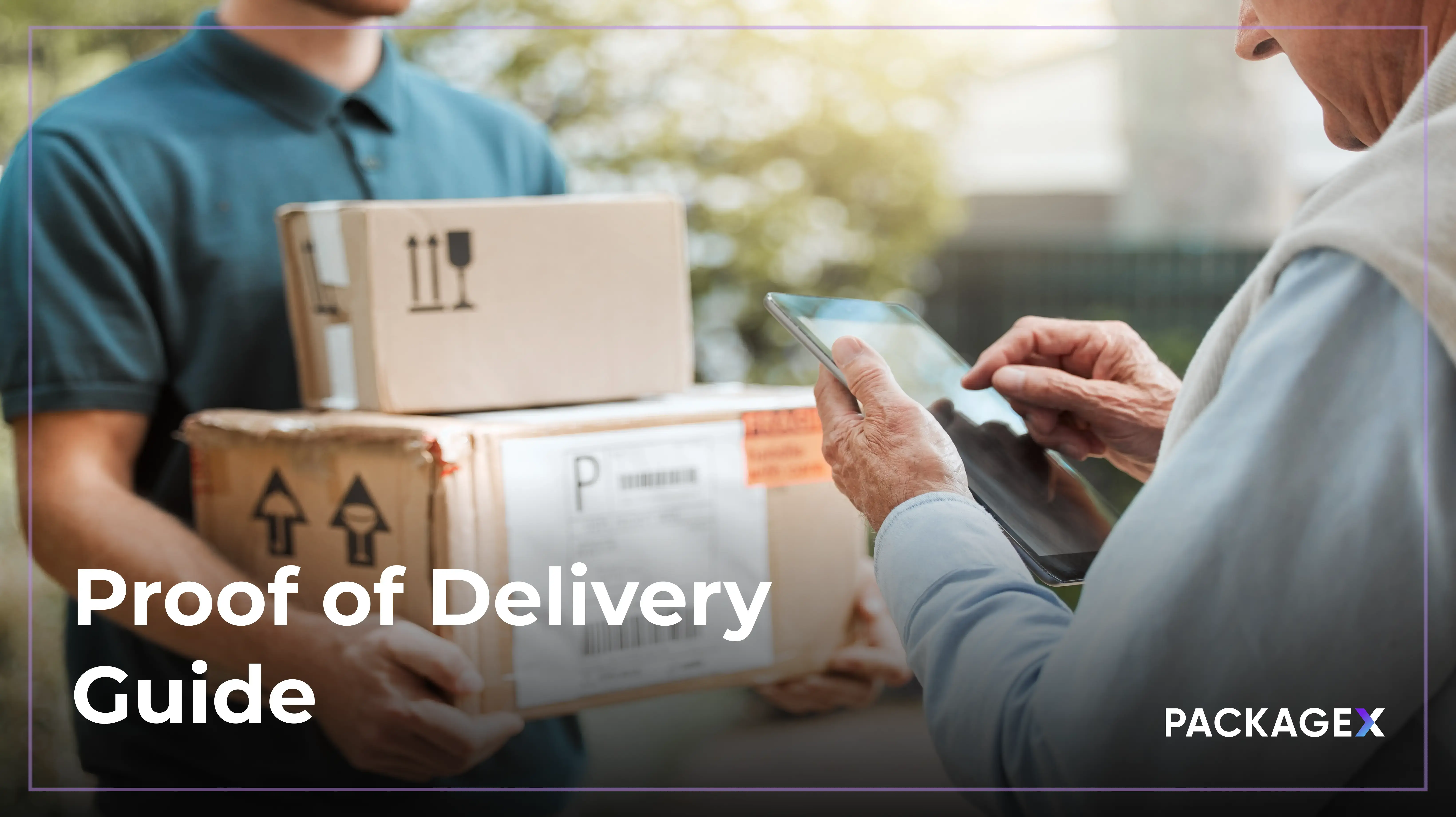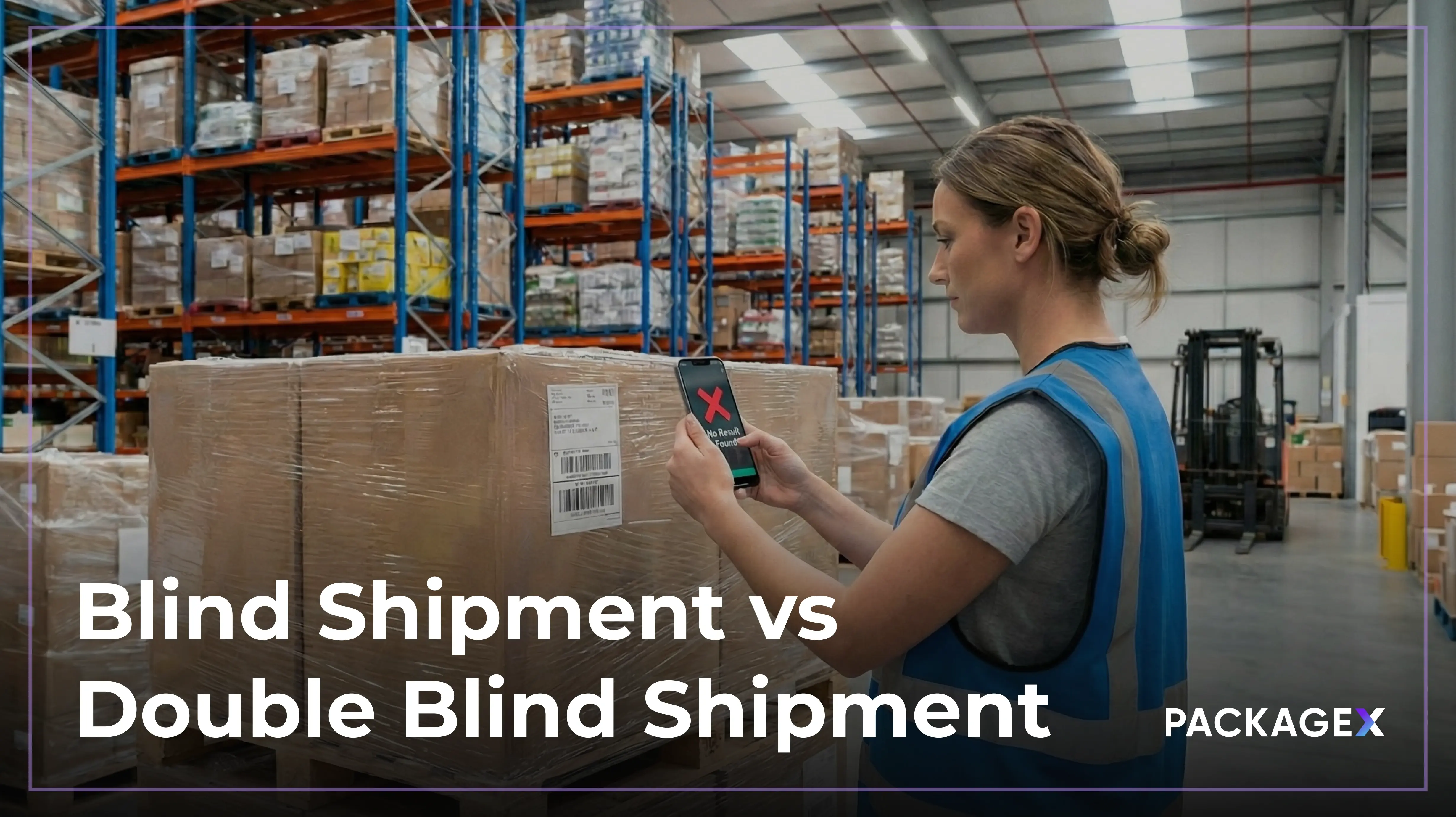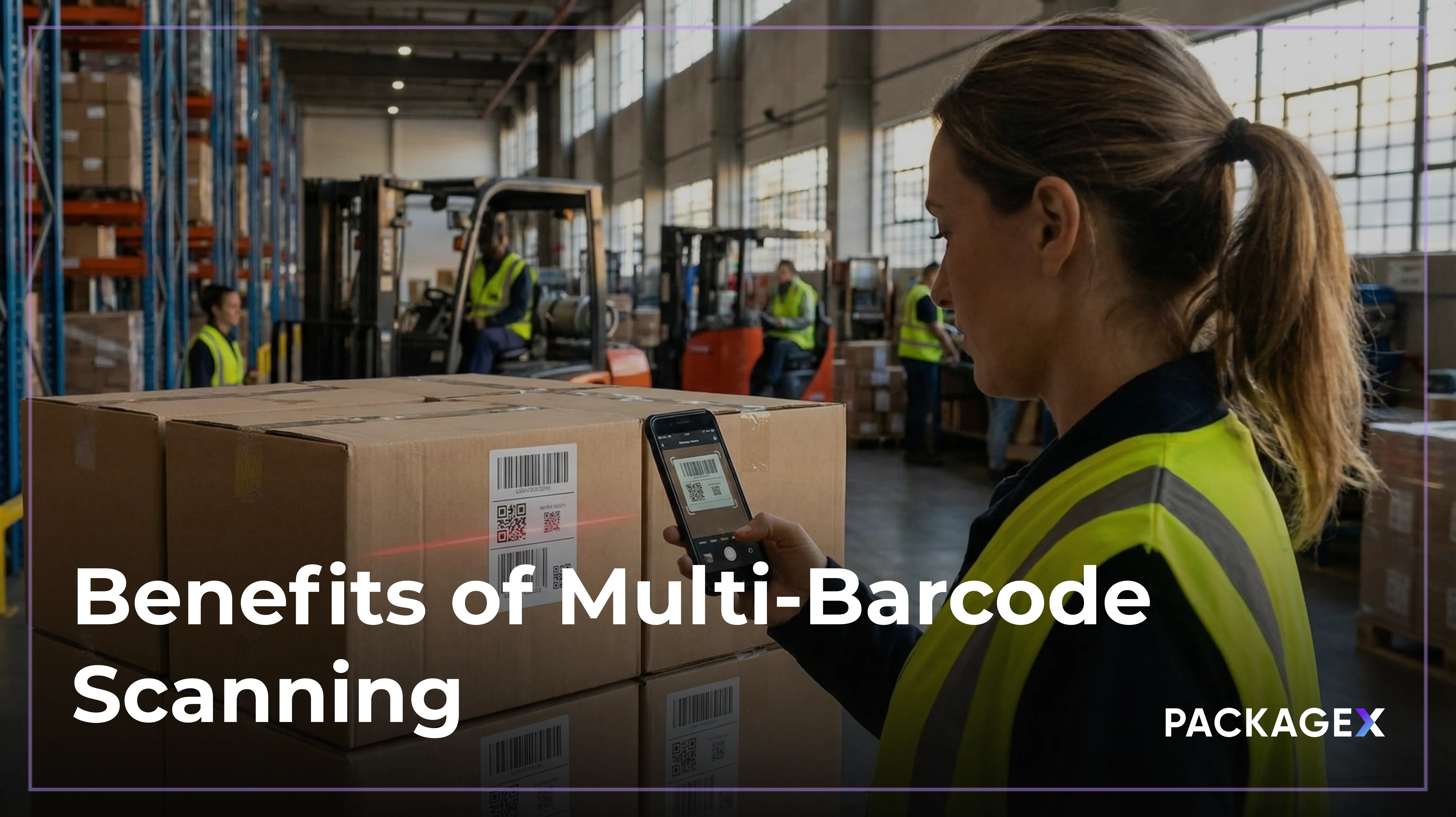Moving heavy freight across the country for a freight forwarding company was starting to feel impossible. They coordinated over 300 weekly shipments, hauling loads from customer pickups to drop-offs (PUDO) through a network of 200 agents based in New York, Santiago, and other major hubs. And with expansion plans into seven other locations, things were only getting more complex.
The problem was that everything was managed using spreadsheets and paper. No automation and no real-time tracking were there to help. Because of manual processes, mistakes were common. Bottlenecks slowed down deliveries. And without clear visibility, even simple issues turned into costly delays.
That’s when they switched to PackageX.
PackageX fixed this by connecting everything through an API-based system. It automatically pulled in orders from different sources and organized them in one place. The team no longer had to enter data by hand, and shipments were tracked in real time. All this without changing how they were already used to working.
In this use case, we’ll break down:
- The biggest pain points they were up against
- The freight solutions that made a difference
- What your logistics business can learn from their success
If you're juggling complex shipping routes or growing faster than your tools can handle, this story is for you.
The Problems: Manual Entry Slowed Everything Down
Even with a large client base, this freight company was still using spreadsheets and typing in each order by hand. This process resulted in constant errors. A missing number or misplaced letter could delay a shipment or send it to the wrong destination.
In freight forwarding, those kinds of mistakes are unacceptable. The industry reports that manual entry errors can reach up to 4%. That may sound small, but it quickly multiplies across hundreds of shipments.
Each error led to delays and extra effort. In an industry that depends on speed and precision, even minor mistakes can strain relationships and eat into profit margins.
Labeling Was Disconnected from Operations
Numbers were either printed or handwritten onto bills of lading (BOL). There was no standard barcode system in place, which made it difficult to identify or verify freight without physically checking each item.
Without consistent package scanning or barcode scanning, packages were mislabeled or lost within the system. Manual labeling also failed to connect with the company’s internal tools. That created extra work and slowed down warehouse operations.
By contrast, modern systems generate tracking labels in sync with inventory movement. This kind of logistics automation helps cut out repetitive steps, improve accuracy, and reduce overhead.
No Visibility Beyond the Dock
Once a shipment left the warehouse, managers had no way to track its progress. Regional hubs operated independently, with no real-time data flowing between them. Without scan events or a unified system, the company had no visibility into where freight was or when it would arrive.
This lack of insight made planning a challenge. Some routes handled over 300 shipments a week, with up to 30 orders per lane. With no clear line of sight, coordinating line hauls became very difficult.
The Solution PackageX Provided: API Integration and Barcode Scanning
Now that the company has switched to PackageX, an AI logistics platform built to provide smart solutions. The following two key technologies shaped the foundation of their transformation:
API‑Driven Order Integration
- Connecting disparate systems: API Integrations make it possible for different software platforms to talk to each other. Instead of entering order details by hand, a freight forwarding company can now pull that data directly into its transport management system. This connection happens in real time through API integration, so orders show up automatically, without manual efforts.
- Reducing errors and improving efficiency: With APIs handling the data transfer, the chances of typos or missing information drop sharply. Companies that adopt API integration often see big improvements. Many report over a 60% boost in how well their systems work together and more than a 50% increase in day-to-day efficiency. For a freight forwarder, this kind of logistics automation helps save time and avoid costly delays.
- Enabling scalability: As your business grows, your systems need to keep up. Whether you're working with new partners, adding shipping lanes, or expanding into new regions, APIs make it easy to scale. You can plug in new tools or connect with external platforms without starting from scratch. This flexibility is key for modern freight forwarding operations that want to grow fast and stay ahead of the curve.
Barcode Scanning and Scan‑Based Visibility
- Real‑time data capture: Barcodes enable real‑time tracking and accurate inventory management. From the moment goods enter a warehouse to final delivery, each scan captures key information such as product ID, quantity, and location, allowing the system to update instantly. This real‑time data reduces stockouts and overstock situations and improves decision‑making.
- Integration into the workflow: Barcode labeling systems instantly create and apply labels as products pass through production, shipping, putaway, restocking, and receiving. This removes the need for separate labeling steps and lowers the possibility of mislabeling. Real-time scans guarantee that the data used for order picking, cycle counts, and final delivery is accurate.
- Improved traceability: AI scanning at each checkpoint logs the item’s location, giving managers end‑to‑end visibility. In a well‑labelled environment, every barcode includes unique lot numbers, destination codes, and batch information, improving traceability and reducing costly mistakes.
Implementation:
1. Seamless Order Integration
PackageX deployed an API‑based connector that imports orders from multiple origins into a single system. This replaced manual excel inputs and standardized data across all agents. With orders flowing automatically into the platform, the team eliminated delays and reduced errors. Each shipment comes with a tracking number that’s already part of the company’s old process. This made it easy for the new system to fit in without disrupting how the team was already working.
2. Barcode Labeling and Mobile Scanning
Agents now use the PackageX mobile app to apply a barcode label at pickup. Labels are generated automatically and embed the shipment’s tracking number. Drivers scan at every stage, mirroring the visibility offered by less‑than‑truckload (LTL) carriers. Because labeling is built into the process, agents no longer need to stop and print labels.
3. Real‑Time Dashboard
The platform provides a centralized dashboard that displays real‑time status for every shipment. Operations teams can view inbound scans in New York, monitor outbound legs from Texas, and track line‑haul progress across the network. Customers also gain visibility through tracking links.
4. Workflow Efficiency and Scalability
With automated order validation and standardized labeling, routine tasks run faster and with fewer mistakes. The company scaled to its target volume, over 300 shipments per week, without adding headcount. The platform’s open API supports further expansion to new hubs and services, such as warehouse logistics, order fulfilment, and user management.
Key Decision Drivers:
- Adaptable Integration: The platform accepted existing DTS tracking numbers and worked around established workflows, reducing friction during rollout. API flexibility allowed the carrier to maintain its current TMS while extending functionality.
- User‑Friendly Mobile App: Drivers and agents quickly adopted the scanning app. The intuitive interface meant minimal training; scanning packages became second nature.
- Strong Stakeholder Collaboration: PackageX and the carrier formed a joint implementation team. Early involvement of operations, IT, and finance ensured realistic timelines and clear expectations.
- Scalable Platform: PackageX’s road map aligned with the carrier’s growth plans. New features such as warehouse logistics and client‑level access controls were added as needs evolved.
Results and Measurable Impact
- End‑to‑End Visibility: Every package now has a full scan history, from pickup to last-mile delivery. With easy package tracking solutions, employees can now proactively track and resolve issues.
- Sharp Error Reduction: Standardized barcode labeling and API‑driven data flows eliminate manual entry errors. Research shows that automating data capture reduces mislabeling and improves inventory accuracy.
- Efficiency Gains: Automating label creation and order validation frees staff from repetitive tasks. API integration cuts manual data entry time, which research indicates can save tens of thousands of dollars annually.
- Scalability: The company comfortably handles more than 100 shipments per week and is ready to expand into new states. New lanes, carriers, and clients can be added without rewriting systems.
Lessons for Other Logistics Companies
- Automate order ingestion: Stop relying on spreadsheets. Use API integration to bring orders into your system automatically. Real-time updates mean fewer mistakes and faster responses.
- Adopt barcode scanning: Apply one labeling system across your operation. Use mobile barcode scanners at every checkpoint. This gives you real-time visibility and reduces shipping errors. You can also scan multiple barcodes at once.
- Deploy intuitive mobile tools: Pick a tool that’s easy to use. If the app is simple, your team will use it. Faster adoption means better compliance and less training time.
- Collaborate across departments: Bring operations like IT and finance into the process early. When everyone’s involved, rollout is smoother. The system will fit actual work, not just a plan.
- Plan for growth: Choose software that grows with you. Look for strong API integration and logistics automation features. You’ll be able to add carriers or warehouses without major changes.
How PackageX Helps Modernize Freight Forwarding Operations?
PackageX gives freight forwarding companies the tools and freight solutions they need to work smarter and reduce costly manual tasks. If you're managing bulky freight or high-volume shipments, automation is necessary.
PackageX helps turn disconnected workflows into one connected data-driven system. Here’s how PackageX helps freight forwarders:
- Real-time package tracking solutions from warehouse to last-mile delivery.
- Unified platform for labeling, scanning, and carrier coordination.
- Custom shipping label customization for faster order processing.
- Mobile-ready AI scanning for on-the-go freight verification.
- Smart workflows that grow with your business, not against it.
If your freight forwarding company still relies on spreadsheets and handwritten labels, now is the time to upgrade.
PackageX is your ideal solution.
Book a demo now!




